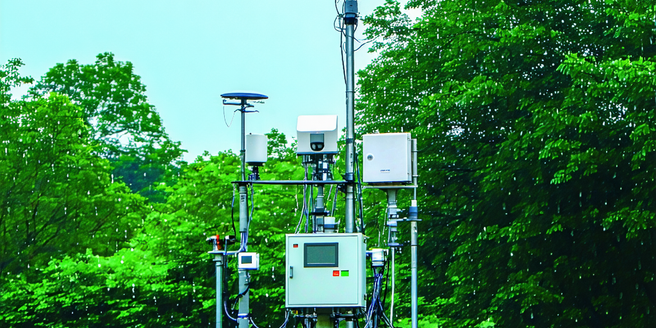
Introduction to Meteorology Sensors
Meteorology sensors are vital tools in the study and prediction of weather patterns. They collect data on various atmospheric parameters, providing invaluable insights into the Earth’s weather systems. These sensors are used in weather stations, research facilities, and even on airplanes, allowing meteorologists to gather comprehensive data for analysis. By monitoring conditions such as temperature, humidity, wind speed, and air pressure, meteorology sensors help in understanding and forecasting weather changes. This technological advancement has been crucial in improving the accuracy of weather predictions, which in turn aids in disaster preparedness and response. As climate change continues to impact global weather, the role of these sensors becomes even more significant, offering a scientific basis for understanding and addressing complex climatic challenges.
Types of Meteorological Sensors
Meteorological sensors come in various types, each designed to measure specific atmospheric elements. Thermometers are used to gauge temperature, while hygrometers assess humidity levels. Anemometers measure wind speed, whereas barometers determine atmospheric pressure. Rain gauges provide data on precipitation amounts. Pyranometers and pyrheliometers focus on solar radiation, essential for understanding solar energy dynamics. Each sensor plays a crucial role in the intricate network of data collection necessary for accurate weather forecasting. Modern meteorological stations are equipped with advanced sensors that offer real-time data, enabling detailed monitoring of the atmosphere. The integration of remote sensing technology, such as satellites and radar, supplements ground-based data, providing a comprehensive view of weather conditions and contributing to more precise and timely forecasts.
How Sensors Measure Weather Elements
Meteorological sensors measure weather elements by detecting and recording physical phenomena. Temperature sensors, such as thermistors and thermocouples, rely on the principle of thermoelectric effect to provide accurate temperature readings. Hygrometers measure humidity by using materials that react to moisture changes, altering their electrical resistance or capacitance. Anemometers determine wind speed through rotation caused by air flow, translating mechanical motion into electronic signals. Barometers measure atmospheric pressure using a variety of methods, including the use of mercury columns or aneroid capsules. Advanced sensors often integrate multiple measurement techniques to enhance accuracy and reliability. These precise measurements are crucial for developing meteorological models that predict weather patterns, aiding in everything from daily forecasts to long-term climate studies.
The Role of Sensors in Weather Forecasting
Sensors form the backbone of modern weather forecasting systems, providing the raw data necessary to analyze atmospheric conditions accurately. By continually monitoring temperature, humidity, air pressure, wind speed, and other critical parameters, these instruments allow meteorologists to build detailed models of atmospheric processes. The data collected is processed by sophisticated algorithms in weather prediction models to forecast future weather conditions. This is crucial not only for daily weather updates but also for severe weather warnings and climate research. As weather prediction models improve, so does the capability to anticipate extreme weather events, thereby enhancing public safety and aiding in disaster management efforts. Sensors, therefore, are indispensable tools in bridging our understanding of complex meteorological phenomena, guiding informed decision-making.
Advancements in Meteorology Sensor Technology
Recent advancements in meteorology sensor technology have significantly improved the accuracy and scope of weather data collection. Innovations like miniaturized sensors and the integration of Internet of Things (IoT) capabilities allow for widespread monitoring in remote and difficult-to-access areas. Satellite-based sensors now provide comprehensive global data coverage, offering detailed information about atmospheric conditions, sea surface temperatures, and even greenhouse gas concentrations. Additionally, the development of more sophisticated data processing algorithms has enhanced the precision of weather predictions. This technology continues to evolve with artificial intelligence and machine learning algorithms, enabling the near-real-time analysis of vast amounts of meteorological data. These advancements not only improve forecasting accuracy but also contribute to a better understanding of climate change and its impacts.
Choosing the Right Sensor for Your Needs
Selecting the appropriate meteorological sensor depends on the specific data requirements and environmental conditions of your application. For example, if precise temperature readings are needed in a research setting, a sensor with high precision and stability, such as a platinum resistance thermometer, may be ideal. In contrast, for general weather monitoring, more robust and less expensive sensors might suffice. It’s important to consider factors like sensor accuracy, durability, response time, and maintenance requirements. Additionally, integration capabilities with existing data networks and software systems can influence the choice of sensor. Understanding the specific application and challenges you face will guide you in selecting a sensor that provides reliable data, ensuring effective monitoring and analysis of meteorological phenomena.
